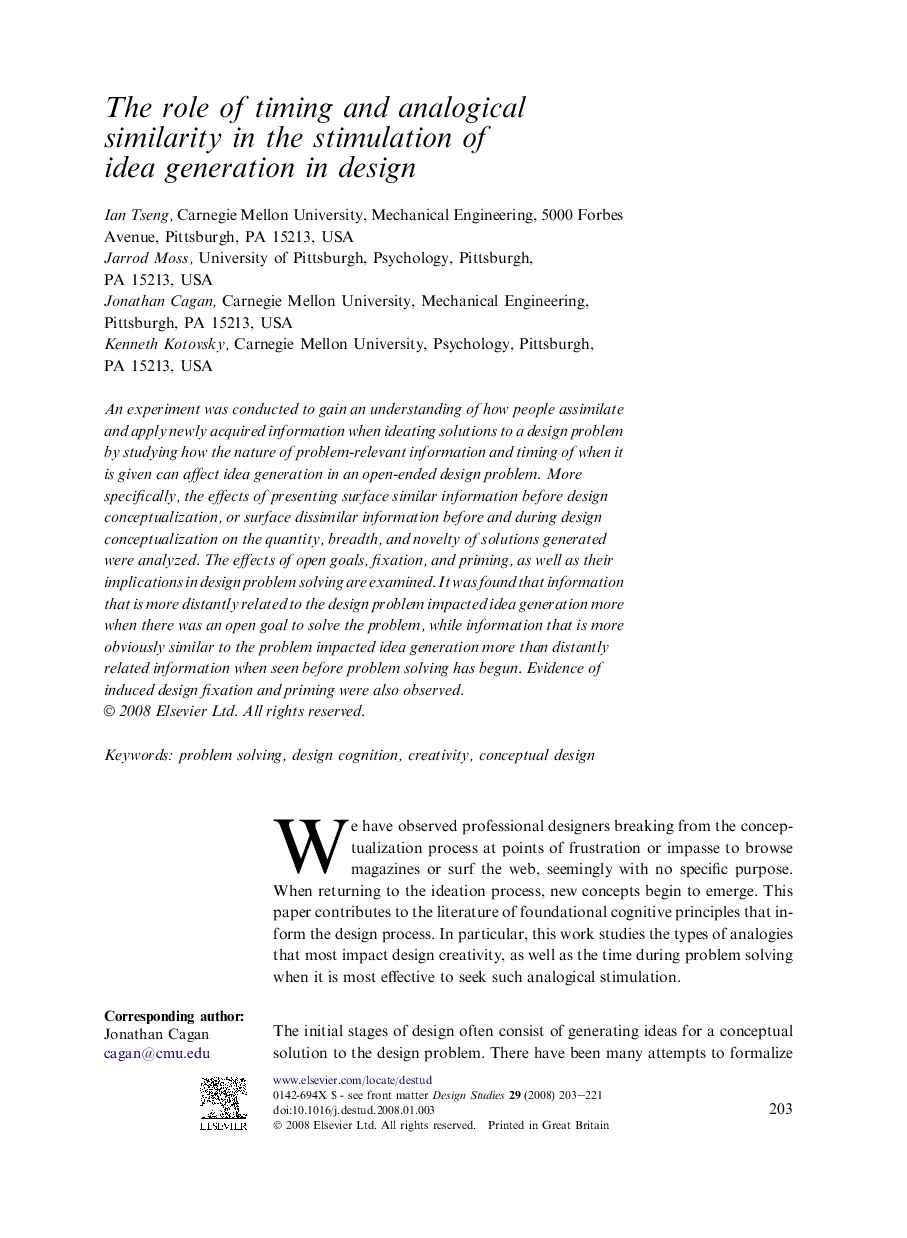| Article ID | Journal | Published Year | Pages | File Type |
|---|---|---|---|---|
| 261784 | Design Studies | 2008 | 19 Pages |
An experiment was conducted to gain an understanding of how people assimilate and apply newly acquired information when ideating solutions to a design problem by studying how the nature of problem-relevant information and timing of when it is given can affect idea generation in an open-ended design problem. More specifically, the effects of presenting surface similar information before design conceptualization, or surface dissimilar information before and during design conceptualization on the quantity, breadth, and novelty of solutions generated were analyzed. The effects of open goals, fixation, and priming, as well as their implications in design problem solving are examined. It was found that information that is more distantly related to the design problem impacted idea generation more when there was an open goal to solve the problem, while information that is more obviously similar to the problem impacted idea generation more than distantly related information when seen before problem solving has begun. Evidence of induced design fixation and priming were also observed.
